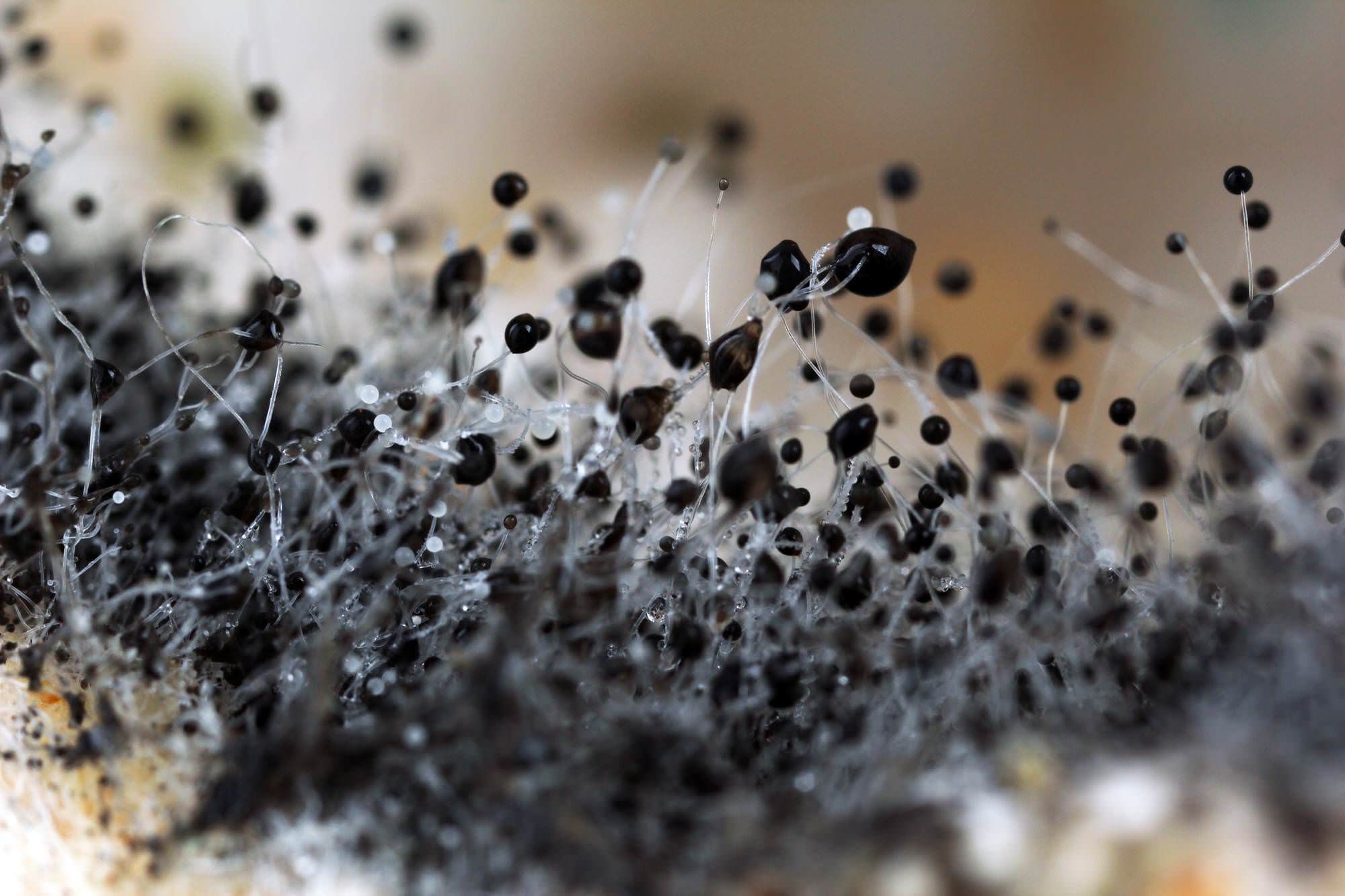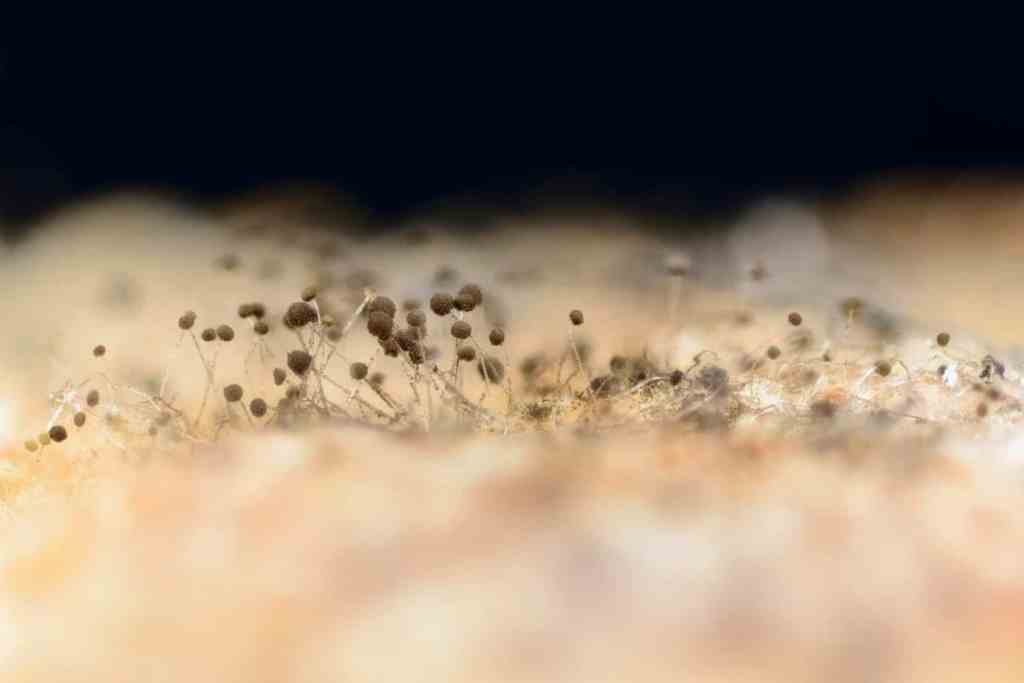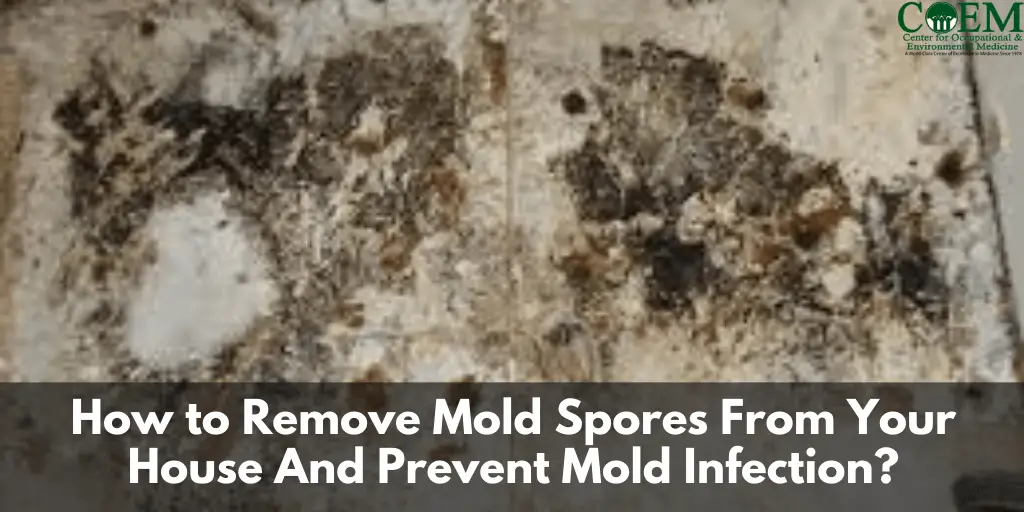When To Call A Professional
As previously mentioned, it is not recommended for a homeowner to try and clear a black mold area surpassing 10 square feet . If the black mold area is greater than this, its best to call a mold removal expert.
Furthermore, since mold can pose health issues, if you have any kind of autoimmune disorder, immune system disorder or are undergoing immunosuppressive therapies, it is safest to avoid cleaning mold by yourself, as it may aggravate health complications.
Overall, small amounts of black mold are safe to clean by yourself and Hydrogen Peroxide can be used Effectively for this.
We have Black Mold Remediation Technicians that can help Find the Source of the Black Mold, Remove it & Prevent it from Returning.
For Disasters of all Sizes,available in 95% of the USA
What If Mold Is Behind Drywall
Fogging is useless in a scenario where the mold is growing behind the walls. Also, you would first have to discover it. Theres no way of knowing if its behind your walls unless you can smell the distinct, musty odor through an outlet, or physically cut a hole in the wall and sniff around that.
If mold is growing behind your walls, it will require cutting and removing the contaminated pieces. It can be done yourself if you know what youre doing. Most likely, however, it will require a professional service to come out, inspect, determine the level of contamination, and remove it.
Of course, once everything is done, before calling in drywallers to restore what was removed, you can fog the area as a preventative measure or just to cover any possible microscopic spores.
Removing Mold From Interior Walls Flooring And Carpet
If the mold is fuzzy and black, it may be much worse than just unsightly. The area should be opened to check for structural damage. Wear safety glasses and respiratory protection. All building materials should be bagged in heavy-duty plastic bags and disposed of properly. Allow the area to dry out thoroughly and make any needed repairs.
To clean porous surfaces like wood and drywall, a detergent should be added to the bleach and water solution to help it adhere. Mix one part dishwashing detergent, 10 parts bleach, and 20 parts water. Apply with a sponge or mop, trying not to over-saturate the surfaces. Do not rinse away, and allow the solution to air dry.
Carpet with mold or a musty smell should be removed completely. Wearing a respirator, cut the carpet and pad into small sections. Mist the materials and under-flooring with water to help prevent the spread of airborne mold spores. Wrap the carpet in heavy plastic for disposal. Use a wet/dry vacuum to thoroughly clean the area and allow to air dry for several days before replacing flooring.
Don’t Miss: How To Remove Mold From Garden Hose
How To Eliminate Black Mold With Ammonia
Wear a respirator and gloves when working with ammonia-based mold cleaning products. Never mix ammonia with chlorinated bleach
Open nearby windows or doors to get a cross-flow of air to dissipate any fumes generated by your cleaning
- Combine ammonia and water in 50/50 proportions.
- Pour the solution into a spray bottle and spray contaminated areas evenly.
- Allow the mold killing solution to sit for 5 or 10 minutes.
- Scour mold tarnished area with a small brush or equivalent and wipe clean.
- Repeat if necessary.
Often enough, many mold killing products will have ammonia already in them. Be extra cautious to follow the directions on the label to the letter and ensure that the cleanser is never mixed with bleach !
Otherwise, ammonia is similar to using bleach in that it should only be used on non-porous areas Always wear gloves when working with any chemical and wash hands immediately, thereafter!
Ways To Kill Mold Naturally

- University of Maryland
Mold and mildew are natural byproducts of a humid environment but that doesn’t mean you want to share your house with the spores. Rather than turning to harsh chemicals, such as bleach or borax, to banish mold, there are natural ways to kill mold at home that won’t hurt your family, pets or the environment.
Read Also: Do It Swing Jig Mold
Does Heat Kill Mold On Bread
Since most experiments focused on the pasteurization process, researchers set out to determine the effects of heat on mold while baking bread.
The experiment showed that no molds survived while the elapsed time was 35 minutes and the temperature was slowly raised from 20 to 100 , to simulate the process of baking bread in the oven.
Note that these temperatures apply to the baking process.
When we take a loaf of bread and expose it to mold, we get a whole different story.
If you want to kill off mold thats present on the exposed bread loaf, you will need higher temperatures 120 for 10 minutes. This temperature destroyed the mold cells but the interesting thing is some mold species will survive even these temperatures.
Limit Your Exposure To Mold
Its important to limit your exposure to mold and mold spores. Keep them out of your eyes and try not to inhale any.
- Wear a mask or an N-95 respirator to avoid inhaling mold.
- Wear gloves that extend to the middle of your forearm. If youre just using water and a mild detergent, household rubber gloves work fine.
- Wear goggles that dont have ventilation holes to avoid getting mold or spores in your eyes.
Don’t Miss: How Does Mold Make You Sick Symptoms
How Can I Inform If Ive Mold In My Partitions
Listed below are some indicators which may point out that youve mold in your house.
How To Get Rid Of Mold In The Basement/crawlspace
Removing mold in these areas follows the same procedure as for walls and ceilings. However, in these areas, the cause of the mold might be especially hard to deal with. An overly humid basement or a poorly ventilated attic could become damp and moldy. Resolving the moisture problem that caused the mold is vital.
Remember that soft, porous surfaces contaminated with mold almost certainly need to be thrown away and replaced. Carpets and rugs are nearly impossible to get completely mold-free.
While mold remediation can be a dirty, time-consuming process, it is not impossible for the average homeowner to deal with. Keep in mind that mold spores are everywhere, so you do not need to eradicate every last spore. Removing all visible mold, thoroughly drying the area and resolving whatever caused the moisture to begin with are the key steps in removing mold. A thorough wipe down with a damp cloth and a HEPA vacuum can accomplish most of your mold removal needs.
Read Also: How To Get Mold Off Bathroom Ceiling
How To Get Rid Of Mold With Baking Soda
Baking soda is mild, harmless to your family and pets, and is a natural and safe household cleaner. It can also kill mold. Baking soda and vinegar are typically used together when dealing with a mold problem since they kill different species of mold.
What Kind Of Vinegar Should You Use
First, save the apple cider vinegar for salad dressing. To clean mold, use regular white distilled vinegar, typically sold with five percent acidity. You can also use cleaning vinegar with its six percent acidity. Both are effective at killing mold. Generic brands are as effective as name brands. Cleaning vinegar is sold online and at many home improvement, discount and grocery stores.
You May Like: How To Get Rid Of Mold In Hvac
How To Use Hydrogen Peroxide To Kill Black Mold
The first step will be keeping in mind the surface and area of mold that you wish to remove. It is not recommended to remove more than 10 square feet of mold by yourself.
If the area of mold exceeds this amount, it is safest at that point to call an expert for removal, especially since black mold can be very toxic.
The surface on which the black mold grows is also important. As mentioned above, make sure that the surface on which youre clearing mold is safe for hydrogen peroxide use.
In order to clean black mold using hydrogen peroxide, you will want to use a 3 percent solution of the product.
- Once obtained, place the solution in a spray bottle and cover the moldy area with hydrogen peroxide by spraying directly onto it.
- Let the product sit for approximately 10-15 minutes. The peroxide should have stopped bubbling by this time.
- Scrub the affected area with a bristle brush until all the visible mold has been removed. Scrub carefully, so as to not damage the surface beneath.
- Once all the black mold has dissipated, wipe down the surface with a wet cloth.
- After wiping the surface with a wet cloth, youll next want to dry the surface with a dry rag.
- In order to prevent regrowth, it is best to provide high air flow to the affected room. This can be done after drying the spot. Potential solutions include opening a window or placing fans in the room.
Does Bleach Or Vinegar Kill Mold

Bleach and vinegar can both kill mold, but vinegar is much more effective for removing mold from porous materials. This is because bleach only kills mold spores on the surface of affected materials. Vinegar will penetrate porous materials and kill the mold at the roots. If you use bleach to remove mold growth, there is a good chance that the mold will return.
Don’t Miss: How To Find Mold In Walls
Effects Of Mold In The Home
Everyone is exposed to mold spores, but they affect each person differently. Those with allergies can suffer effects year-round. These spores can trigger reactions like allergic rhinitis or asthma. They can produce volatile organic compounds, or VOCs. Besides the unappealing look and smell, mold can trigger allergic reactions such as respiratory irritation, watery eyes, coughing, and headaches. Coughing, wheezing, runny nose or irritated eyes and throat are all signs of a mold allergy. These can also trigger an asthma attack, with symptoms like wheezing, coughing and shortness of breath. Some strains may also be toxic! This is why we need to address an issue promptly. If youre wondering how to get rid of mold, youve come to the right place!
Can Mold Spores Journey By Way Of Partitions
Even when the mold is rising peacefully inside your partitions, publicity to the mVOCs can nonetheless trigger adversarial medical results. Though mold spores are too massive to move by way of partitions, the gases and vapors which the canine are educated to detect and find the supply of, can and do permeate the partitions.
Recommended Reading: How To Rid Of Mold In Shower
Can Inhaling Mold Kill You
Mold is all over in your home on your garments, in your floor covering, and pretty much anything permeable. The larger section of the respiratory system involves your lungs.
So, what happens when you breathe in a moldy place? It varies for the humans who inhale it. Some people beings are more sensitive than others. Inhaling the molds can cause allergies, and the worse is the risk of asthma.
For the common symptoms, you may also experience fatigue, watery and itchy eyes, nausea, respiratory problems, coughing, or sneezing. If you struggle with these types of symptoms, it is best to contact your doctor so that the expert can handle them right away.
Repeating the most common query here, can mold kill you? It depends upon the situation of your body. The average people may no longer have recognized what type of substance can cause a bad impact on their health. So, it is a good idea to stay away from something that tends to damage your body.
How To Remove Mold From Inside Walls
The inside of your walls is a great environment for mold, but a terrible one for you to find and clean. Often homeowners dont realize there is mold inside their walls until its causing a major problem. Warning signs include an earthy, musty odor in the home, allergy symptoms that clear up when you leave the property, and stains or dampness on the wall itself. If mold does get inside your walls, youll probably need a pro to handle it. At the very least, the drywall has to come down in order to properly access and treat the mold and prevent it from coming back. You can mitigate the damage by looking out for the warning signs, and reducing the humidity in your property.
Recommended Reading: Is It Bad To Breathe In Mold
Will Opening Home Windows Cut Back Mold
Open a window and shut the doorThis can assist cut back the quantity of condensation that seems however it will not get rid of the issue. Home windows are additionally a key space to maintain an eye on if mould begins to develop round your home windows you realize you could have an issue. The mould could seem in your window sills and across the window frames.
Is It Important To Test Mold
The development of mold no matter the type should be eliminated. The health risk is not correlated to a particular kind or amount of mold. There are no limits on acceptable indoor mold levels set by the government.
Experts typically do not suggest regular testing for mold. As a rule, if visible mold development is available, testing is unnecessary. Mold examining isnt recommended for the following reasons:
- Mold will consistently be found in testing. It is all over the place and there will consistently be some level of mold.
- Sampling for mold doesnt cause health risks.
- Mold testing isnt governed.
- Cleanup techniques are the same regardless of the kind of mold.
Don’t Miss: How To Clean Mold Between Pavers
How To Remove Mold Outside The House
External mold is just as serious as mold inside the home. Youll want to remove mold from the outside of your house, on siding or on your deck, as soon as possible. External mold can do significant damage to exterior surfaces over time, eating away at wood, stucco and other materials. In addition, exterior mold can easily work its way into the house if left unchecked.
- Don gloves and eye protection and liberally spray a 1-to-10 solution of bleach and water on the surface.
- Scrub tough stains with a stiff bristle brush dipped in the solution.
- Let sit for 10 to 20 minutes and rinse with a garden hose.
How To Kill Mold With Hydrogen Peroxide

You May Like: What Mold Does To Your Body
How To Get Rid Of Mold In Walls
If the wall is made from a non-porous surface, such as finished wood or stone, it must be thoroughly dried. A dehumidifier, proper ventilation or a wet vacuum can be used. Then, a damp wipe down of the area should remove most of the mold. Cleaning products designed for mold removal are helpful, however it is not necessary to bleach moldy areas or use other biocides. If the wall is made from a porous material such as gypsum drywall, wallpaper or unfinished wood, it is not possible to remove all of the mold from the tiny nooks and holes in the wall. The affected section of the wall must be cut out and replaced. This can be very expensive. However, the mold will almost certainly come back otherwise.
Finish the mold removal by using a vacuum with a HEPA filter. A non-HEPA vacuum may not contain the mold spores and can actually spread them into the air. Vacuum the entire area and surrounding areas, even if no mold is visible.
Do not just paint or caulk over mold without removing it. According to the EPA, this will cause the paint to flake and peel, and when the paint comes off, you will still have mold on the wall.
How To Treat Mold With Lemons
Lemons are a natural deodorizer, antiseptic, bleach, stain remover, and cleaner and they can also remove black mold. The high concentration of acid in lemons breaks down mold, making it easy to remove and leaves behind a disinfected surface. Along with that wonderful citrus aroma!
Juice three-to-five lemons into a cup and pour over the moldy area. Let it sit for five minutes and then wipe the surface with a damp towel. You can reapply and scrub the surface to get rid of tough mold stains.
These natural remedies are great non-toxic alternatives to chemical-based black mold removers, and many of them are also effective against mildew. They are safe for your family and safe for the environment, and are frequently less expensive than commercial brands. To learn more about the basics of mold removal, check out this guide from EPA.gov.
From removing mold to weekly housekeeping, The Maids can help you tackle dirt and grime with our full range of cleaning services.
Recommended Reading: How To Install Vinyl Stair Nose Molding
